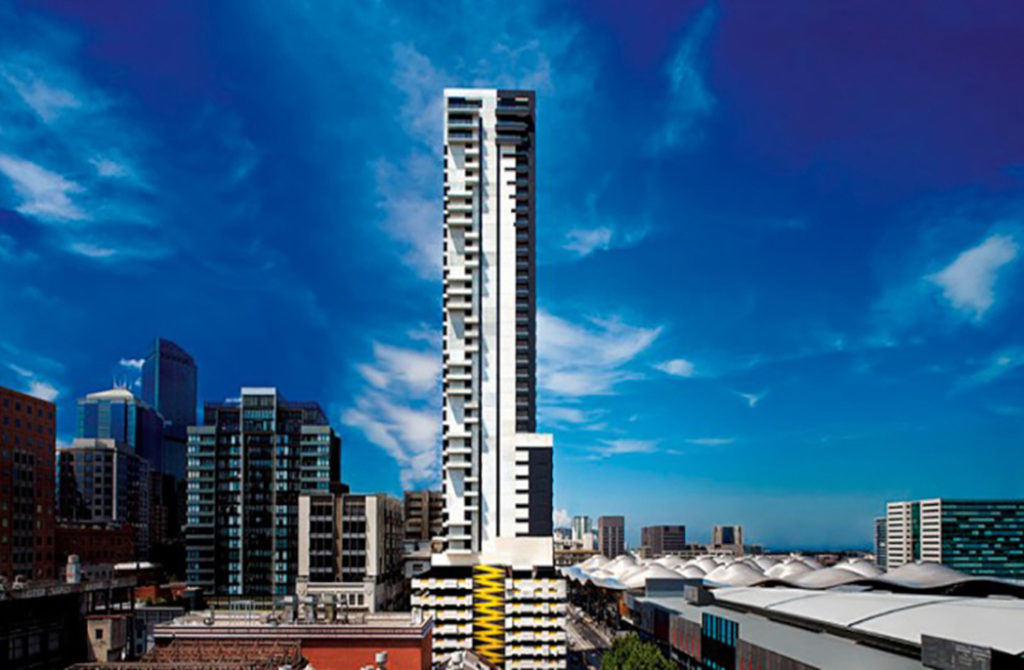
The biggest challenge in a decade could send property prices soaring.
Seems that Australia’s building industry is ‘falling apart’… and it could make property prices boom.
There’s some twisted economics at work here, but it’s not too hard to follow.
The first thing to get our head around is the revelation last week that Australia’s cladding crisis has spread to the suburbs.
Remember how it turns out that a bunch of high-rises in Australia had been built with ‘flammable cladding’ – imported cladding that was not compliant with Australian standards… and actually liable to catch fire.
Apparently there’s 10,000 buildings in Melbourne alone.
Now, it seems, the risk is spreading to the suburbs. From the ABC:
The alert affects an unknown number of dwellings, including single-storey family homes, which had previously been largely unaffected but are now not compliant with building codes.
Until now, most of the concern relating to non-compliant cladding was focused on flammable material used primarily on medium and high-rise buildings…
The VBA alert said the certification withdrawal meant nine types of cladding “cannot be relied upon as evidence of suitability”, meaning they would no longer be regarded as compliant with building codes…
The organisation’s vice president, Wayne Liddy, said the affected products were commonly used on small residential homes as well as high-rise apartments, meaning the impact would be felt throughout Australian cities and suburbs.
“It’s very alarming,” Mr Liddy said.
“It affects the industry as a whole. From high-rise to suburban housing.
“It’s not just aluminium composite panel, or ACP, it’s also expanded polystyrene, which is common in many buildings with fewer than three storeys.
“Many of these products thought to be compliant are no longer…
Phil Dwyer, national president of the Builders Collective of Australia… {said}
“We’re in an incredible situation now where the industry is falling apart”…
The national general manager of building inspection company Roscon, Sahil Bhasin, estimated the certification changes could quadruple the number of building rectification orders issued in Melbourne.
“The majority of second-storey dwellings in all the outer suburbs are built from expanded polystyrene,” Mr Bhasin said.
“If you have a look at other places like Sydney’s outskirts, they would also be affected.
Oh my flipping gawd. Are you serious? This is the news, so it is perhaps tailored to be sensational (yes, even the ABC), but still. This seems kind of massive.
And then it turns out the Neo200 building in Melbourne – the high-rise that caught fire earlier this month – had only been deemed a “moderate risk”. If a single cigarette can set fire to a ‘moderate risk’ building, what does that say about the ‘high risk’ ones.
And then there’s the whole palaver around the Opal Tower in Sydney, which seems to just be a case of shoddy workmanship.
Put it altogether, and it’s not hard to get the impression that the building industry really is just “falling apart.”
And prices are going to boom.
What?
This is the twisted economics I was talking about. What we’re talking about with all this – if a massive amount of high-rises and suburban homes have to be remediated – what we’re talking about is a massive supply shock.
Through the whole process, as buildings are remediated, people will need a place to live. For a short while at least, that stock comes off the market, and renters hit the streets en masse.
It also potentially ties up all our builders for the next few years, pushing up the prices of new builds.
It also means that compliant buildings will attract a premium. (Non-flammable houses will be in high demand!)
This is twisted economics. This is one of the biggest challenges facing the Australian building industry in decades. And it could send prices through the roof.